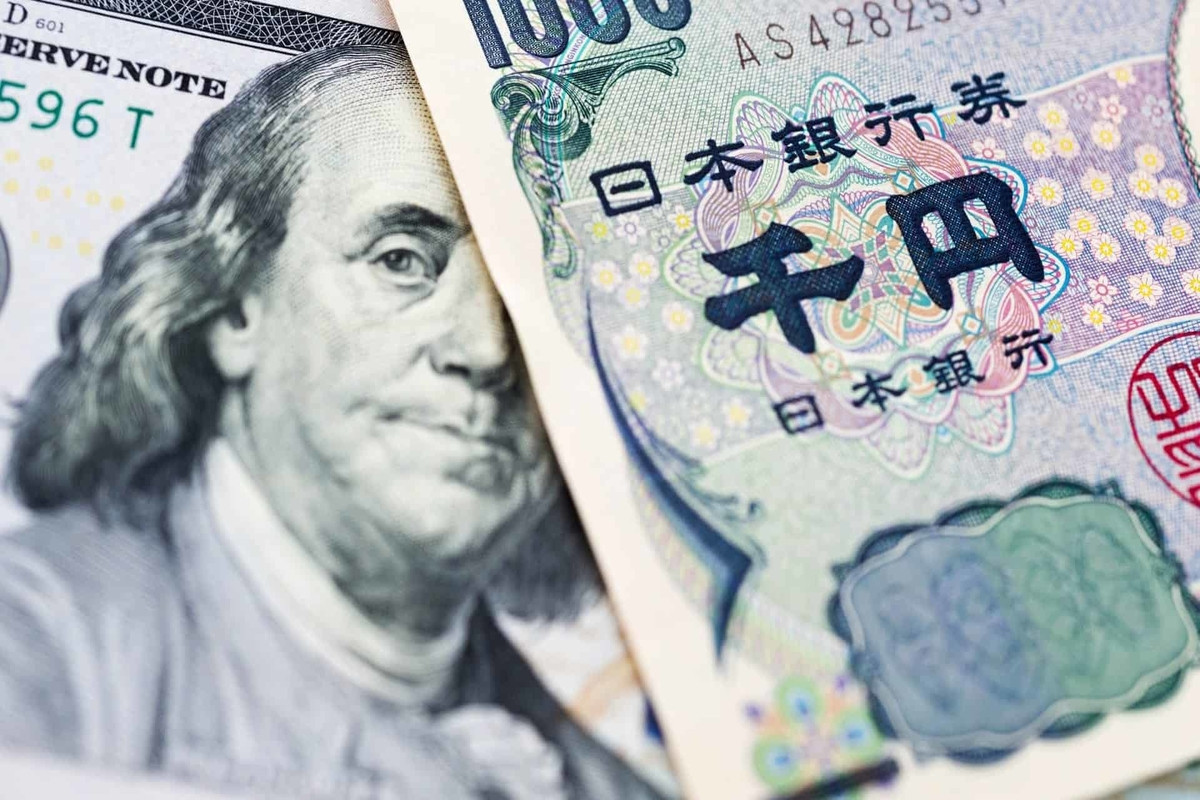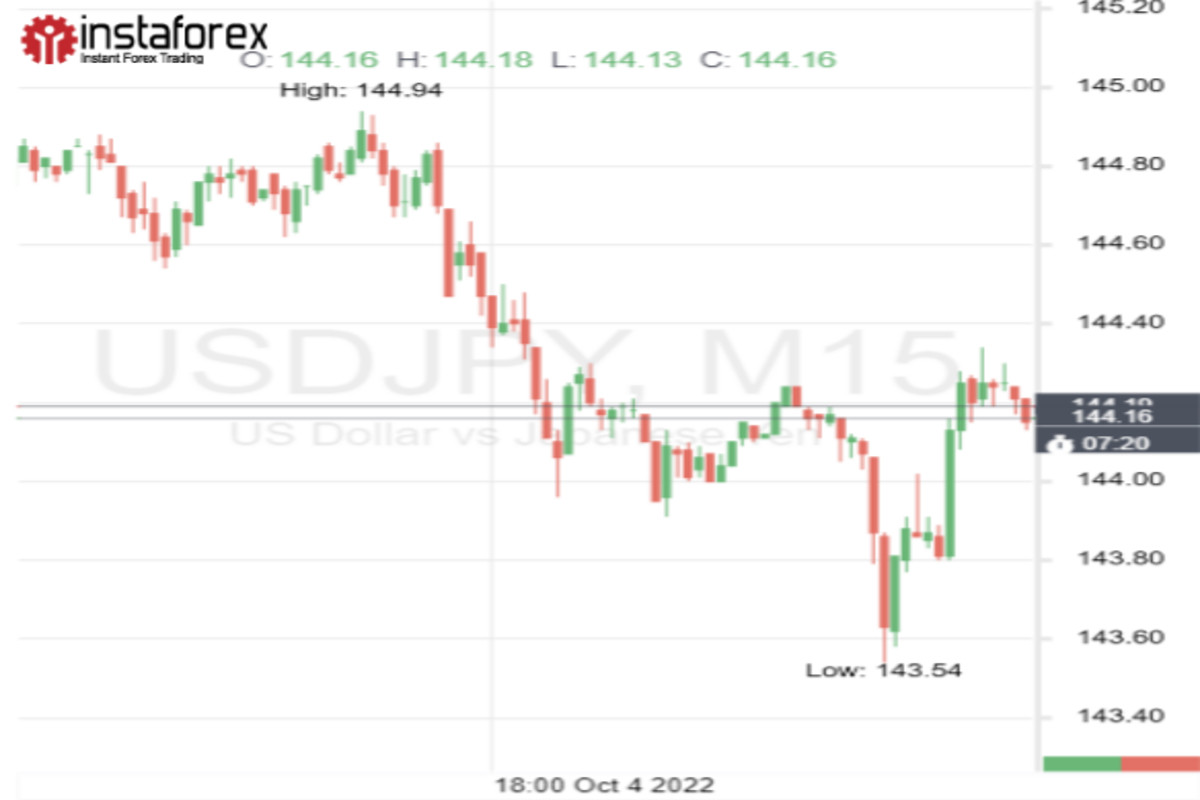
Until yesterday, the USD/JPY pair, like a steadfast tin soldier, tried not to follow the example of other dollar assets and keep from falling. But the latest greenback sale knocked it down too.
The dollar is crashing
The USD has skyrocketed in all directions this year. «Rocket fuel» for it was the normalization of the Fed's monetary policy.
Today, the US Central Bank, like many other regulators, is actively fighting against record high price increases by raising interest rates.
Today, the US Central Bank, like many other regulators, is actively fighting against record high price growth by raising interest rates. Moreover, the US regulator is at the forefront of the anti-inflation campaign.
Since the beginning of the year, the Fed has already raised the rate 5 times, three of which were by 75 bp at once. The last increase in the indicator was in September, which gave the dollar new strength.
During its meeting last month, the Fed made it clear that it has no intention of ending tightening just yet, and hinted at a sharper rate hike.
This hawkish attitude has propelled 10-year US Treasury yields and the greenback to new highs.
The best dynamics of the dollar has traditionally demonstrated in tandem with the yen. In September, when the Bank of Japan once again confirmed its commitment to the dovish strategy, the USD/JPY pair crossed the threshold of 145 for the first time in 24 years.
The growing monetary divergence between the US and Japan provided the asset with such strong support that it was able to recover quite quickly even after the intervention by the Japanese authorities.
However, yesterday the strong foundation cracked and the rate collapsed like a house of cards. The USD/JPY pair dived 0.4% and was below the level of 144, while at the start of the week the asset again stormed the barrier at 145.

What caused the greenback to collapse?
On Tuesday, the US currency suffered a big sell-off on almost all fronts. The euro soared against the dollar by 1.6%, while the pound sterling - by 1.2%.
This resulted in the biggest daily drop in the DXY index in over 2 years. Tuesday's low was 110.50, down 4% from last week's all-time high of 114.78.
The pressure on the greenback was reinforced by fears that the Fed might slow down the pace of rate hikes, as the Reserve Bank of Australia did yesterday.
The RBA's decision to raise rates by just 25bp shocked the market and made traders doubt the Fed's hawkish resolve, especially as the US economy continues to show signs of slowing down.
On Tuesday, statistics from the US labor market added fuel to the fire. The JOLTS report showed that in August the number of vacancies in the country as a whole fell to almost 10.1 million. This is well below the consensus forecast of 11.15 million and July's figure of 11.17 million.
Coupled with the disappointing statistics on business activity in the US manufacturing sector, which was released at the end of last week, a sad picture emerges.
Analyzing the latest macro data, investors are well aware that the previous rounds of rate hikes could not but affect the US economy.
There is a whole bunch of side effects already now. And this may well serve as a sufficient reason for the Fed to pursue a less aggressive policy.
Does the yen get hope?
The weakening of hawkish expectations regarding the future rate of the Fed has significantly reduced the yield of US bonds. Thus, the yield of 10-year bonds fell yesterday by 1.4 bp, and 2-year bonds - by 1 bp.
The yen, which is extremely sensitive to changes in these indicators, finally felt relieved. But, for how long?
This morning the dollar is licking its wounds after a large-scale fall the day before. It is supported by a sharp increase in interest rates in New Zealand.
On Wednesday, the RBNZ raised the indicator by 50 bp for the fifth time, which slightly reduced the degree of panic in the market. Traders are now at a loss: what if the Fed doesn't slow down too?
The emerging hope for a continuation of the tight monetary policy in America pushed the USD/JPY pair back above the 144 mark.
Japanese economists at MUFG Bank expect the asset to trade at current levels until at least the end of the year. Despite the growth of speculation about a possible retreat by the Fed, the dollar will not give up so easily won positions.
«In any case, this year we will see at least 2 more rate hikes from the Fed, while the Bank of Japan will not change its dovish attitude,» the experts assure.
They forecast a sustained recovery in the yen only next year, when the Fed slows down or pauses tightening.
Technical picture for the USD/JPY pair
Analysts at UOB draw attention to the fact that the downward momentum on the USD/JPY chart still remains and point to the existing risk of further decline.
«In the coming days, the dollar will trade with a downward bias towards the level of 143. But our view will be nullified if it manages to break above the strong resistance level, which is currently at around 144.90,» the experts emphasized.
 English
English 
 Русский
Русский Bahasa Indonesia
Bahasa Indonesia Bahasa Malay
Bahasa Malay ไทย
ไทย Español
Español Deutsch
Deutsch Български
Български Français
Français Tiếng Việt
Tiếng Việt 中文
中文 বাংলা
বাংলা हिन्दी
हिन्दी Čeština
Čeština Українська
Українська Română
Română

